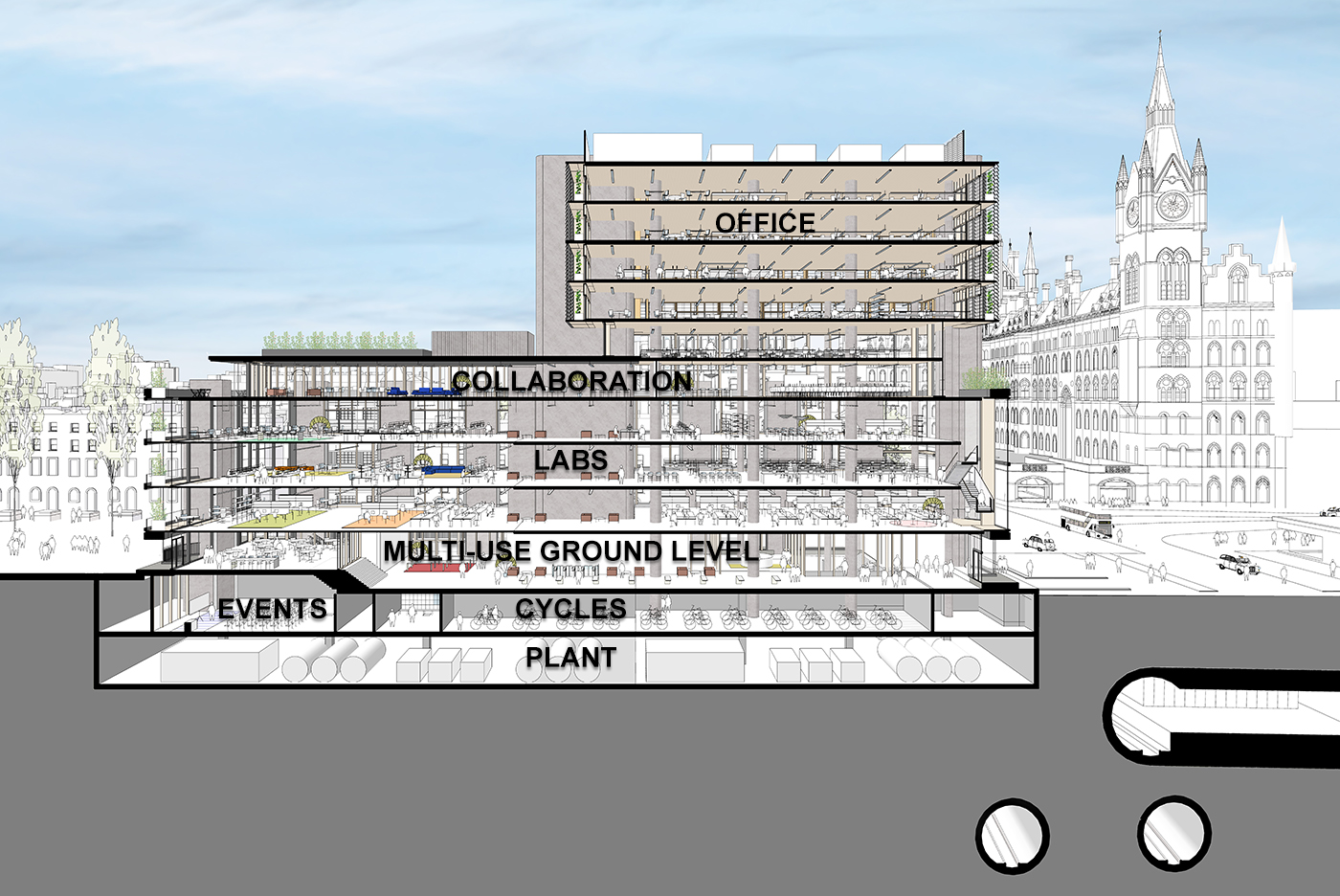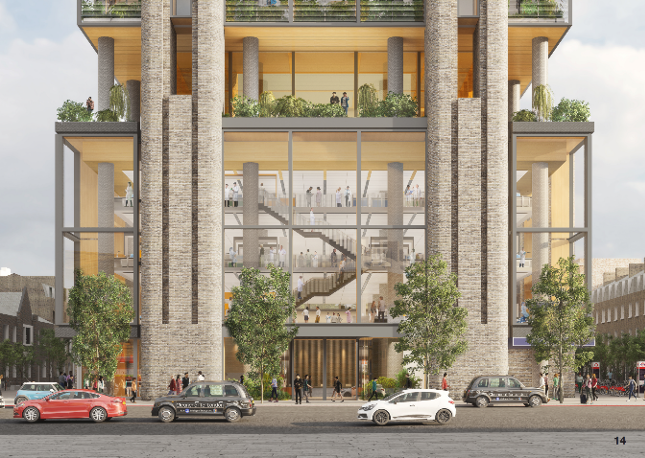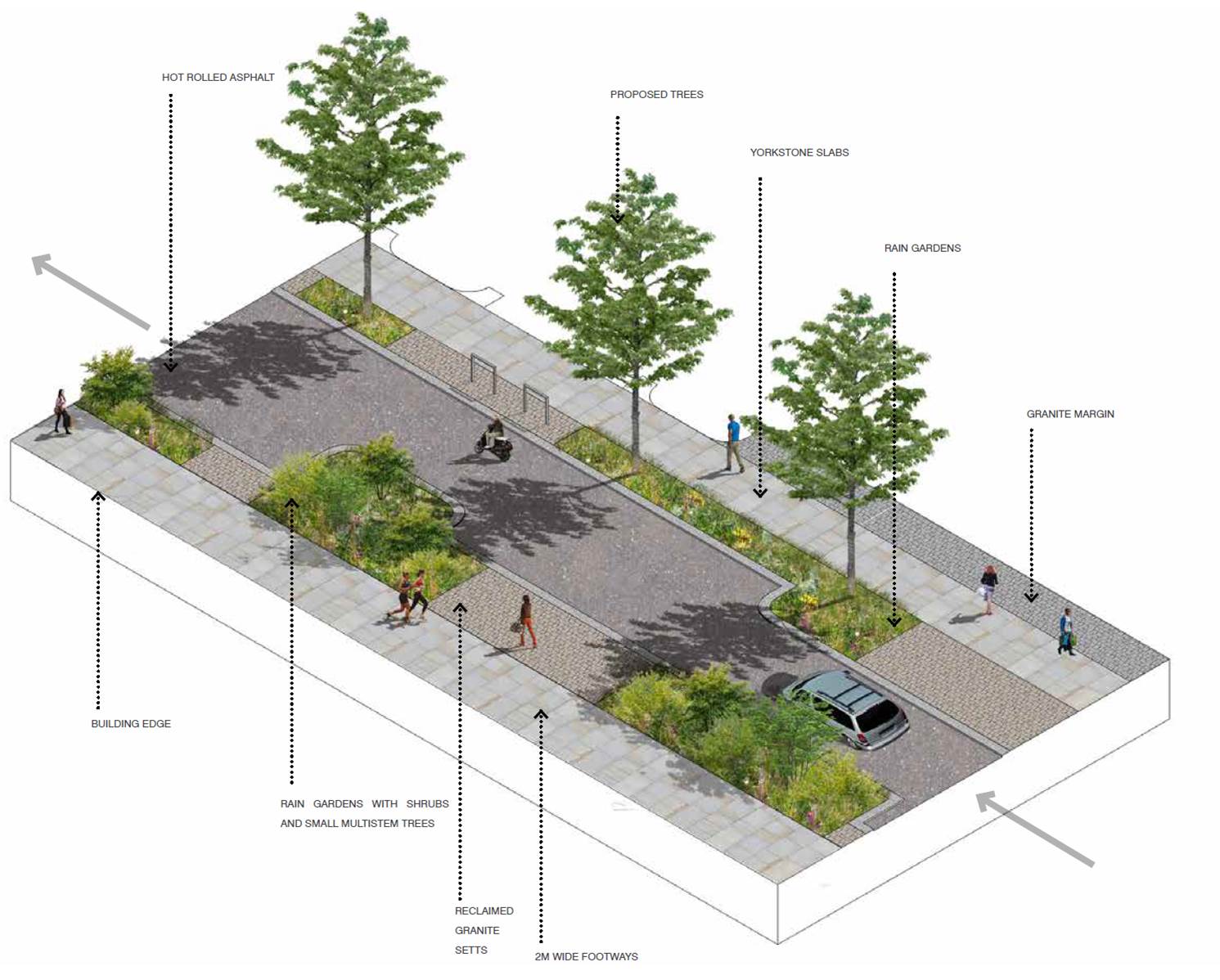Belgrove House Proposal

Site Context
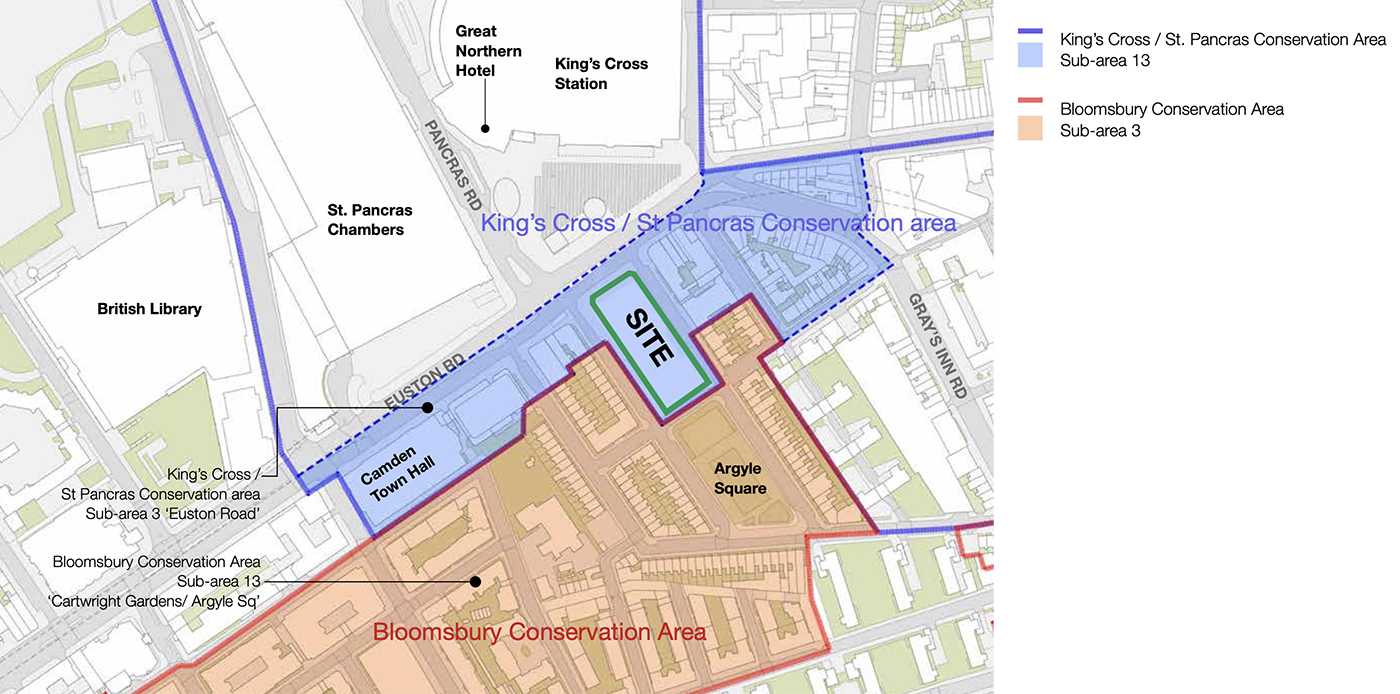
Aerial map showing Belgrove House site boundary
All of the buildings that define the area have distinct architectural characteristics from the 19th, 20th and 21st centuries, which creates a rich and diverse character. These include the King’s Cross and St Pancras Stations (19th C), Camden Town Hall and the British Library (20th C). Both stations have benefited significantly from major modernisation programmes over the last 20 years.
We believe our proposals will be a positive addition to this varied area, adding a further layer of history as the continuing redevelopment to the north is doing successfully.
Belgrove House has a number of elements which highlight the need for it to be redeveloped, including:
- a poor presence on the Euston Road;
- narrow and cluttered streetscape and frontages to Euston Road;
- existing Tube boxes on the pavement that form an obstruction to pedestrian flow on Euston Road;
- largely blank façades at street level on Belgrove, Crestfield and St Chad’s streets which help to enable anti-social behaviour;
- no street planting or greenery on either side street or Euston Road;
- large amounts of on-street parking on Belgrove and Crestfield Streets which is underutilised.
The site is currently being underused as a self-storage facility in the heart of the Knowledge Quarter and we believe that a well-designed building in keeping with the local area is appropriate for this location.




The Brief
1. An exemplar for the Knowledge Quarter
- A signpost at the heart of the Innovation District
- Creating an incubator for innovation
- Meeting the needs of Knowledge Quarter occupiers
2. Building for a Changing Climate
- A whole life carbon approach
- Harnessing nature to improve well-being
- Building in flexibility for the future
3. Responding to Urban Context
- Respecting the nationally significant historic neighbours
- Marking an international gateway
- Celebrating an area of strong character
4. Benefitting the Community
- Breaking the Euston Road barrier
- Transforming the surrounding streets
- A new outlook for Argyle Square
- A connection between the community and the KQ
- Provision of new social housing on a nearby site.
Our initial designs were focused on developing a building for businesses that wish to operate within the Knowledge Quarter. These designs have now been refined in detail for MSD to meet their specific requirements as part of the vision to deliver a new MSD UK Headquarters and Discovery Centre. MSD already have a long-standing presence in the UK with a number of existing locations covering head office, research and manufacturing sites.
For some time, a UK Headquarters and research space has been sought, with King’s Cross the preferred location due to its proximity to the international and national stations and location in the heart of the Knowledge Quarter.
The proposed building is ten storeys to the north along the Euston Road, dropping down to four storeys on Argyle Square to relate to the scale of the square.
The proposed building is in line with the other buildings along Euston Road and is slightly lower in height to the new Standard Hotel nearby.
Floors one to three are lab enabled, providing 4 metres from floor to soffit. The main lab space focuses onto King’s Cross Square, which allows a view out onto the square, and importantly, provides a window into the research labs.
The fourth and fifth floors are set back slightly, articulating the building massing and providing planted terraces for building occupants.
Floors five to nine provide a generous open-plan office environment appropriate to HQ use.
A generous, tall public front floor provides a shared front door, giving access to building occupants and members of the public. A second entrance on Argyle Square provides access to the the café/events space at ground level and into the lower-ground level auditorium.
In line with the low-carbon strategy, the team intends to recycle and reuse existing building materials on the site where possible, such as bricks where these are salvageable. The re-use of these materials will reduce the embodied carbon of the new building.
The proposed innovative building skin for Belgrove House has been designed to meet the specific demands of operational energy reduction in line with the low-carbon design agenda.
MSD

Images of the MSD Discovery Hub in San Francisco
The proposals for Belgrove House have been designed to meet the needs of Knowledge Quarter occupiers such as MSD, a multinational life sciences company that discovers, develops and provides innovative medicines and vaccines to make a difference to people’s lives.
MSD has been looking for a suitable site for some time and identified King’s Cross as the ideal location for their Discovery Hub and UK HQ as a centre of excellence for the life science community.
A location in King’s Cross is so important for fostering collaboration, being close to world leading universities and hospitals in London – many of whom MSD already collaborate with. It also helps access the science triangle between London, Cambridge and Oxford.
MSD is proud of its long-standing presence in the in the UK with a number of existing locations covering head office, research, and manufacturing sites. In King’s Cross alone MSD currently has offices at Two Pancras Square and has research laboratory scientists working in both the Crick Institute and the London Bioscience Innovation Centre – all in the London Borough of Camden.
Since the summer of 2019 the project team has worked closely with MSD and their architects to design a lab-enabled building which meets their requirements and enables MSD to deliver a new world-leading Discovery Research Centre in London, housing state-of-the-art research laboratories to discover new medicines.
This building will also become MSD’s UK headquarters. The current focus of the UK team is to work on diseases of ageing.
MSD Outreach and Benefits for the Local Community
- Pharmaceutical companies such as MSD often contribute to a Life sciences eco-system that helps other smaller biotech companies get set up. This has been seen in other locations across the UK where Pharma companies are located such as Cambridge, Hertfordshire and Manchester. So, in addition to the jobs created directly in the building there could be other jobs created by new companies enabled by the presence of MSD.
- MSD has a long history of outreach to the local communities in which they are based. Their manufacturing site in Cramlington in the North East of England is a great example of this with their ‘Neighbour of Choice’ programme whereby employees give their time to teach science lessons in local primary schools.
- Another mechanism to which MSD is committed to all the communities in which they are based is their employee volunteer programme which allows staff to volunteer for activities of their choice, either at the MSD site location, or the neighbourhood where they live.
- Group volunteer activities support local schools, charities and environmental projects and are often organised as team-building events.
- In MSD’s US Discovery Centres employees engage the local scientific community – in Boston MSD currently share the auditorium and pre-function space of their centre in the form of multi-day, evening and weekend events.
- Further community benefits are being explored with the Council as the design moves forward, alongside Precis, to engaging with the local communities in Camden.
MSD have had great success so far in recruiting technical experts – scientists to work at their locations in Camden – and want to build on that success. MSD seeks a very diverse workforce and this location helps MSD to do that.
Design amends made as a result of consultation

Strategic Review Panel with Camden Council
29th April 2019

Review with Senior Officers with Camden Council
10th December 2019
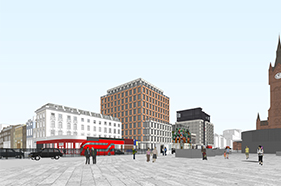
Design Review Panel 1 with Camden Council
21st June 2019
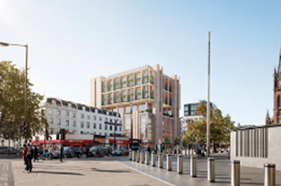
Review with Senior Officers with Camden Council
11th February 2020
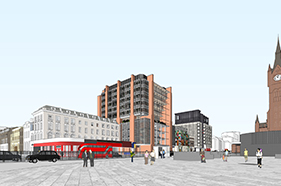
Design Review Panel 2 with Camden Council
25th October 2019

Current Scheme
21th July 2020
The proposals for Belgrove House have been developed in discussion with Camden Council and have undergone a number of changes to get to the designs that we are presenting now.
Since we began consultation with the local community and key stakeholders, we have implemented the following design changes:
Refining the Core
- East and west core extents have been moved inboard in plan
- South edge of upper floors released to present glazed bookend and view to façade planting
- Core outer corners facing Argyle Square ‘eroded’ and glazed
- Roof level core corners set back
- Further articulation to core south elevations
- The plant screen on level 10 between core elements has been set back
Developing Facade Design
- Oriel windows introduced
- Additional balconies to rear of third floor
- Double-skin façade design development on levels 5-9
Reducing the Waist
- Footprint of levels 4 & 5 has been reduced
- Terrace dimensions increased
- Further articulation to the façade
Ground Floor and Public Realm improvements
- LU entrance design development
- Public realm design development
- Green infrastructure development – e.g. roof terrace design
- General arrangement and areas of ground, lower-ground and basement uses
- Increase in ‘lab-enabled’ area
Updated Design July 2020
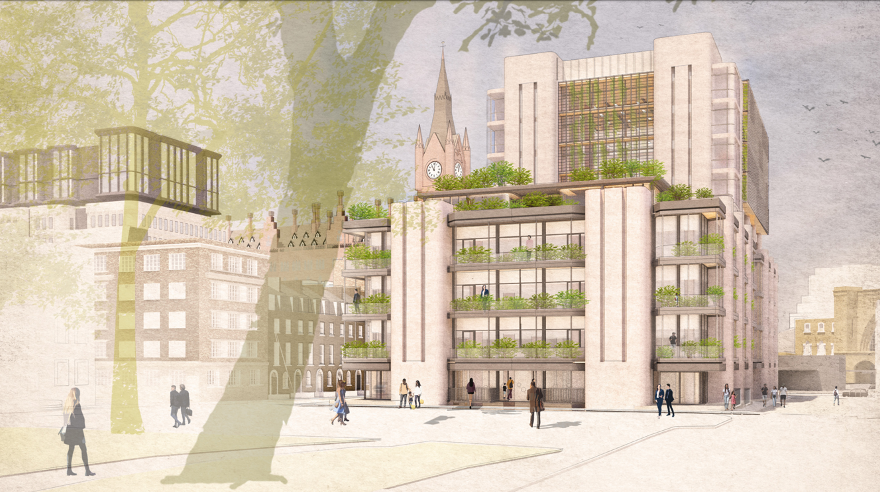
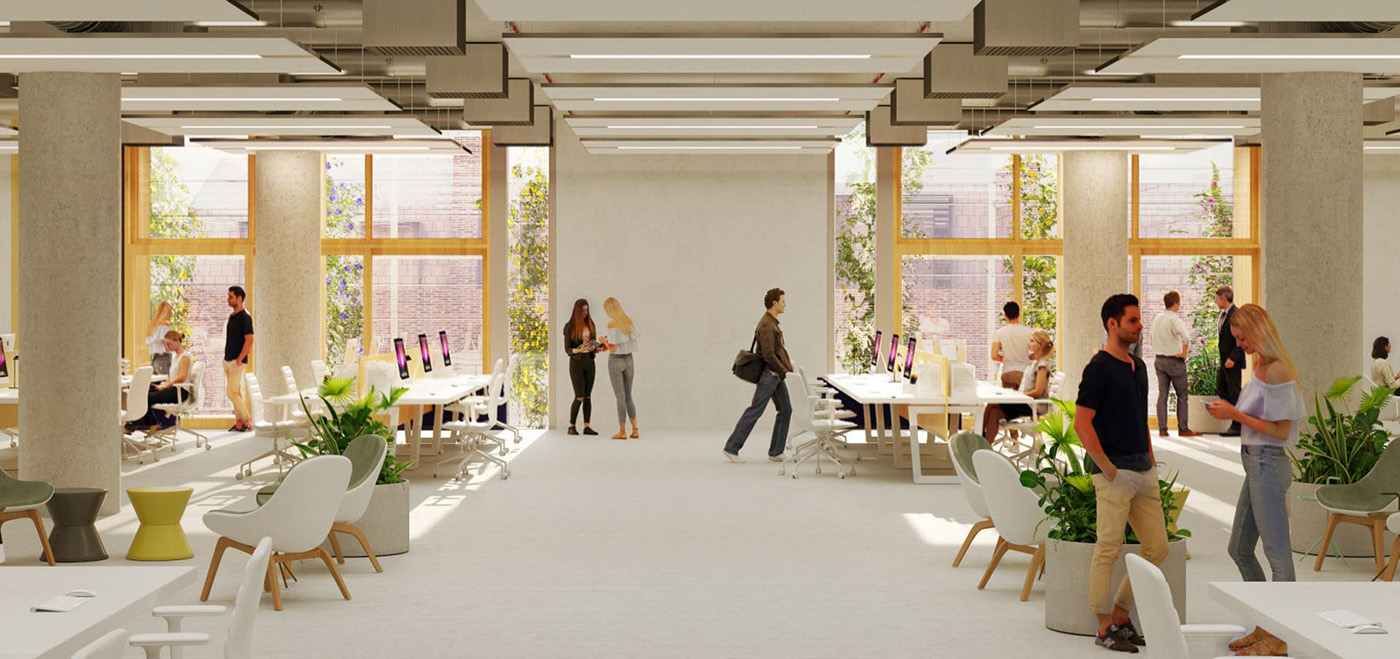
Typical view from within office to green facade within the louvre space.
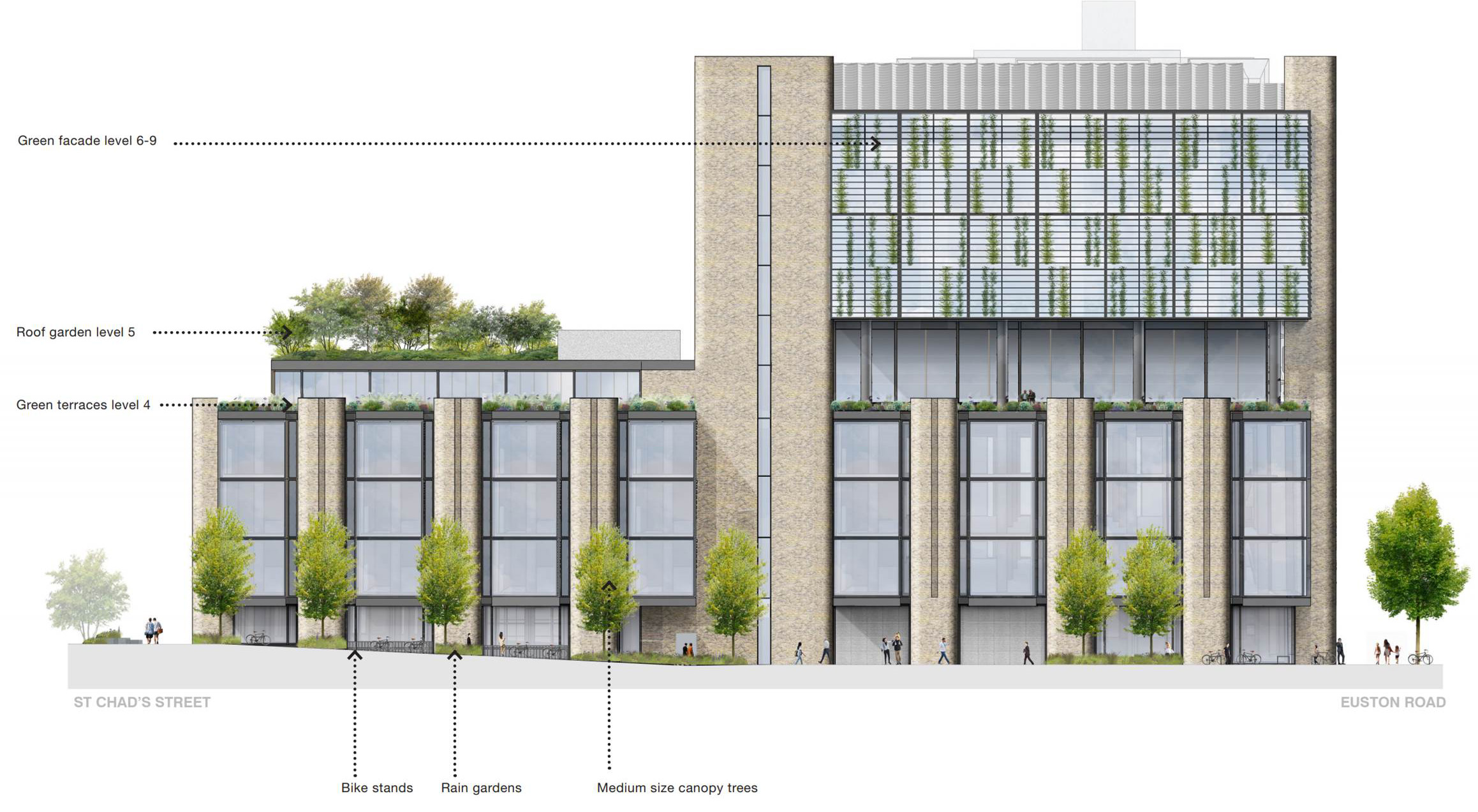
Crestfield Street – East Elevation
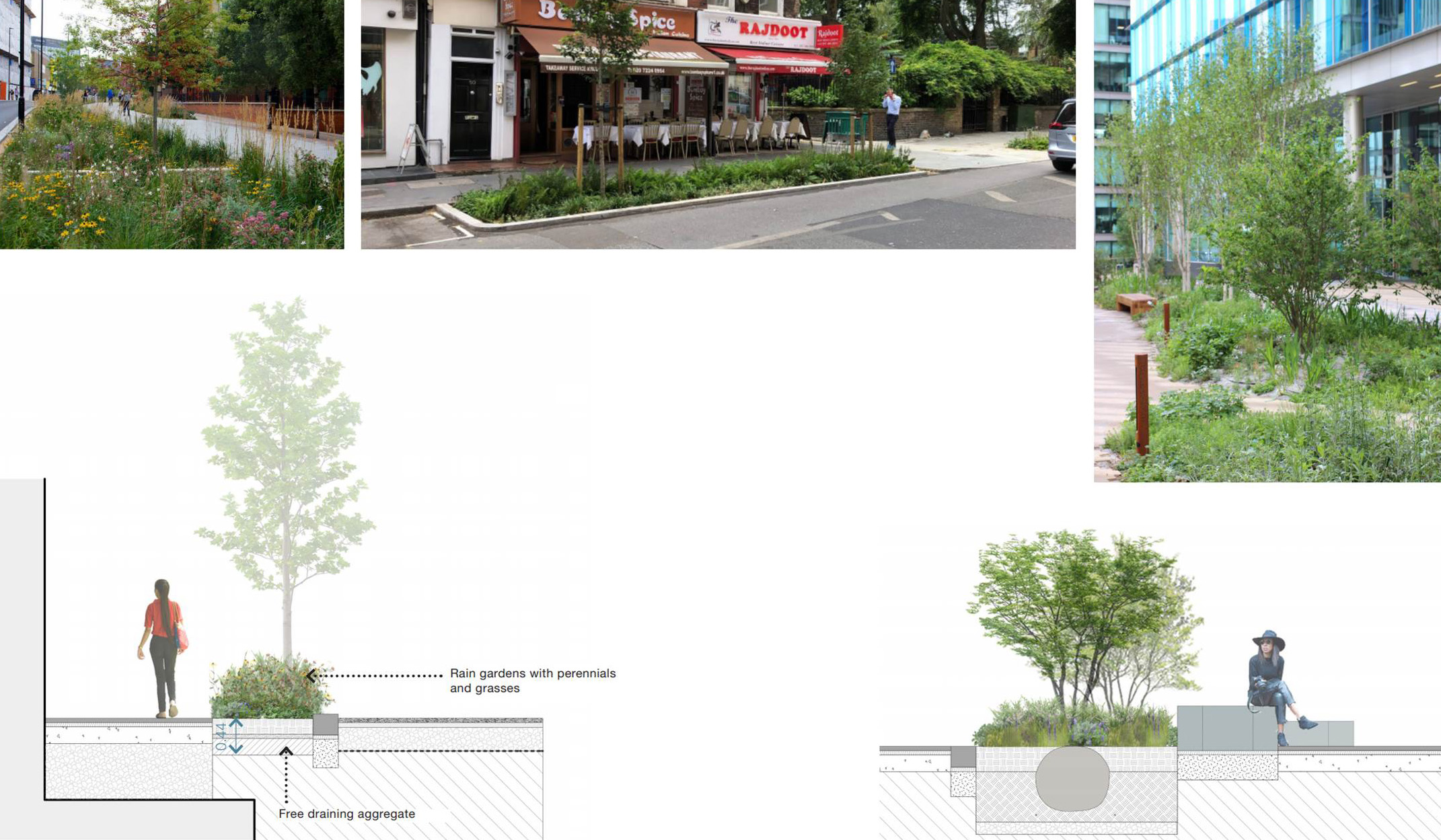
Rain Gardens and Woodland Planting
Key Views
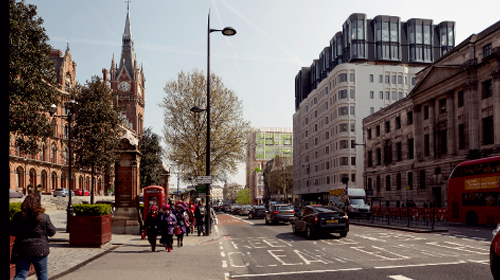
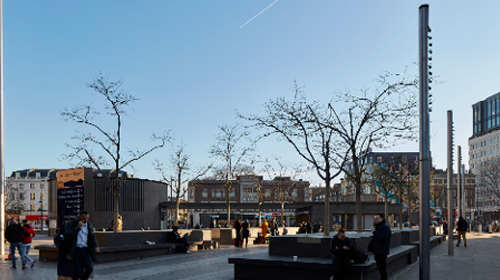

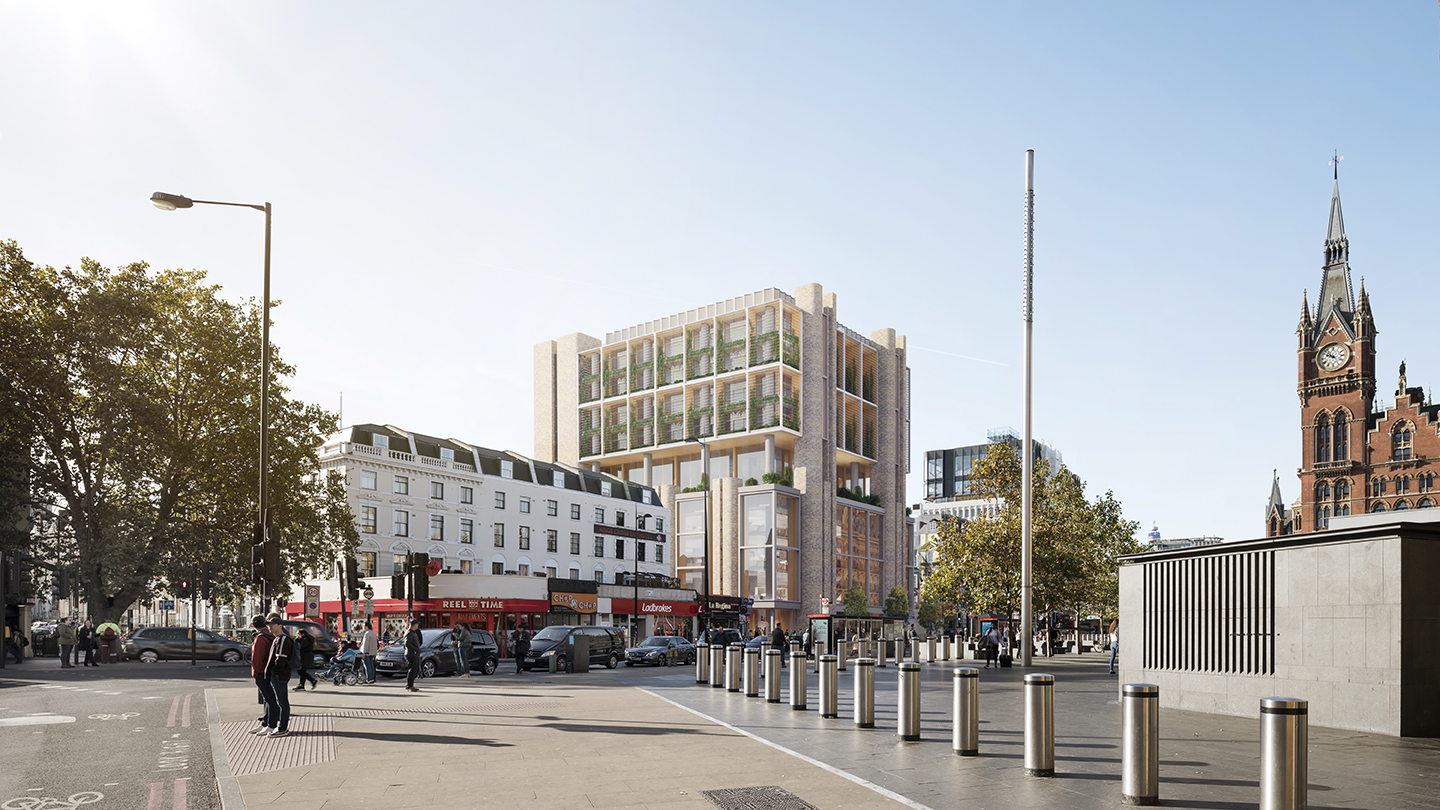



360-degree views of proposed Belgrove House
Use click and drag motion to see 360 views of the proposed building at Belgrove House.
Please note, the 360 technology is best viewed on a desktop.
Environment & Sustainability
Designing a carbon-efficient building for the future.
Belgrove House could set a new benchmark for how the next generation of buildings can address the climate emergency. A whole life carbon approach could see the building’s footprint minimised with the scheme using sustainable materials. It has been designed to reduce carbon emissions generated through construction, operation and future fitout refurbishment.
A green and sustainable design
- Belgrove House sits on Euston Road, one of London’s busiest and most polluted roads. The pavement outside the building is cluttered with the tube entrance boxes for King’s Cross Underground and there is no landscaping to break up this hard urban environment.
- This project would provide a green focal point, widening the pavement by removing the station entrance boxes and considerably improving the pedestrian route between King’s Cross, Bloomsbury and Clerkenwell.
- Our aspiration is to design and build a project which is climate change resilient. The proposed planting isn’t just at ground level, but carries on up the building as part of the façade to contribute to the natural cooling ventilation system, thereby helping to reduce the building’s energy usage.
Components of Whole Life Carbon in a Typical Office Building
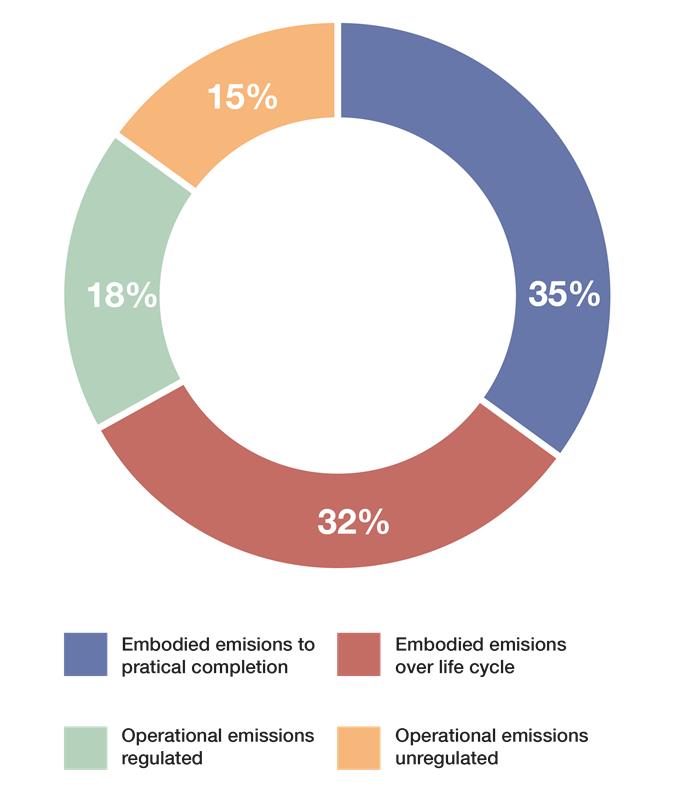
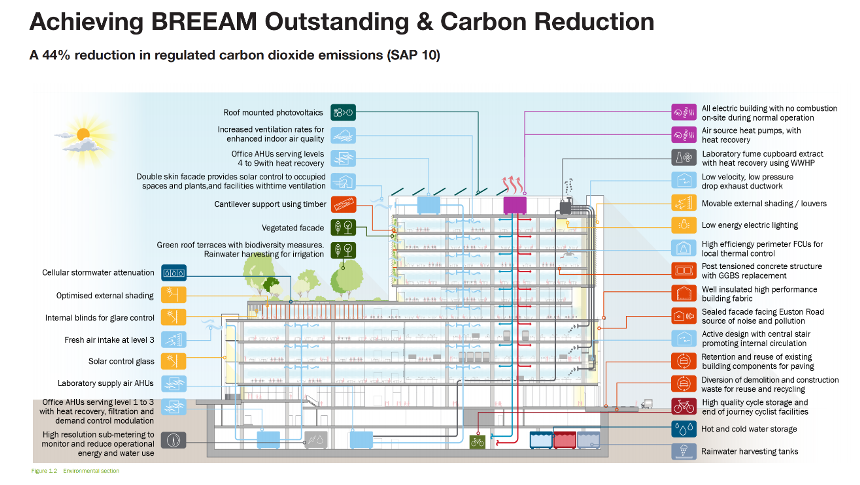
Innovative biophilic façade
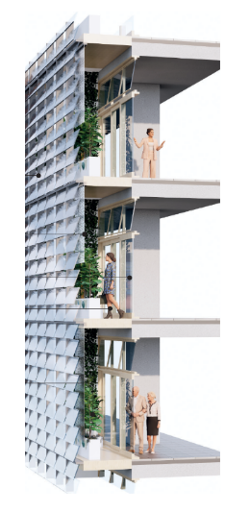
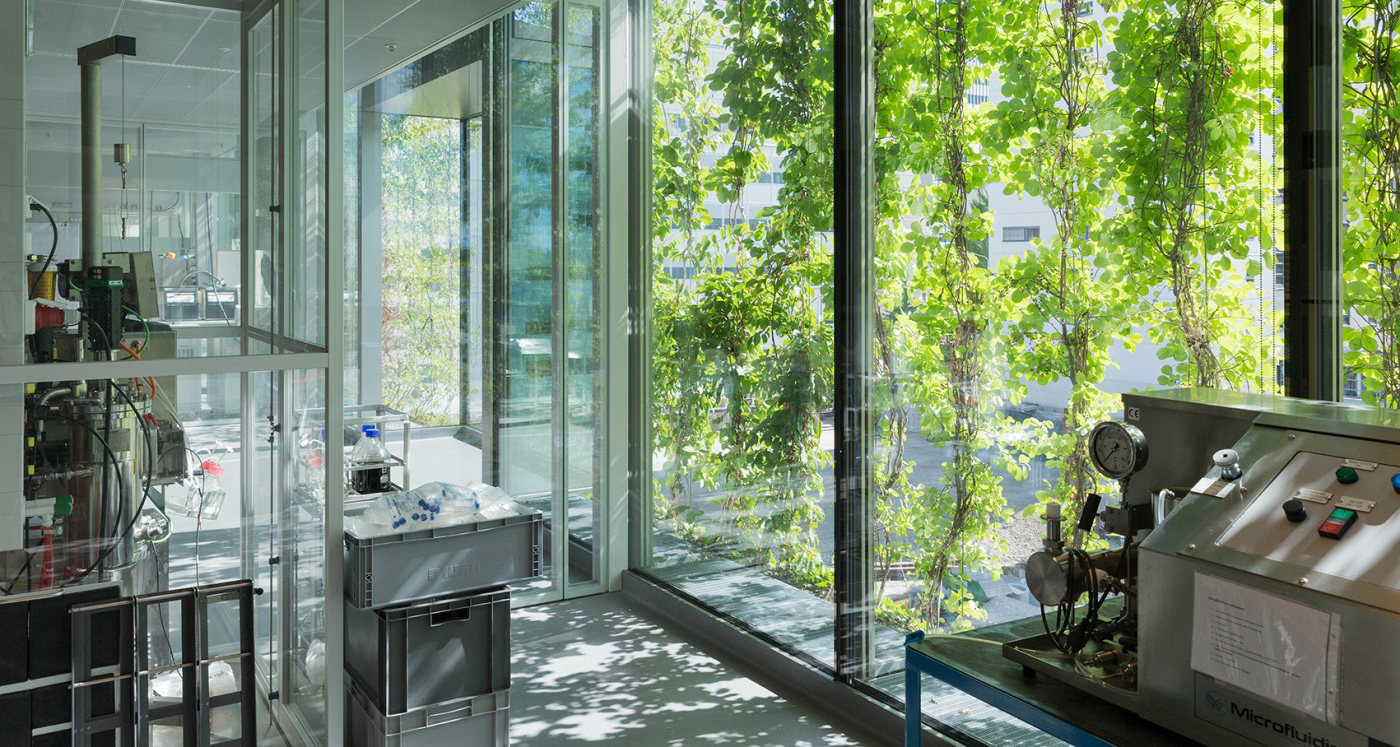
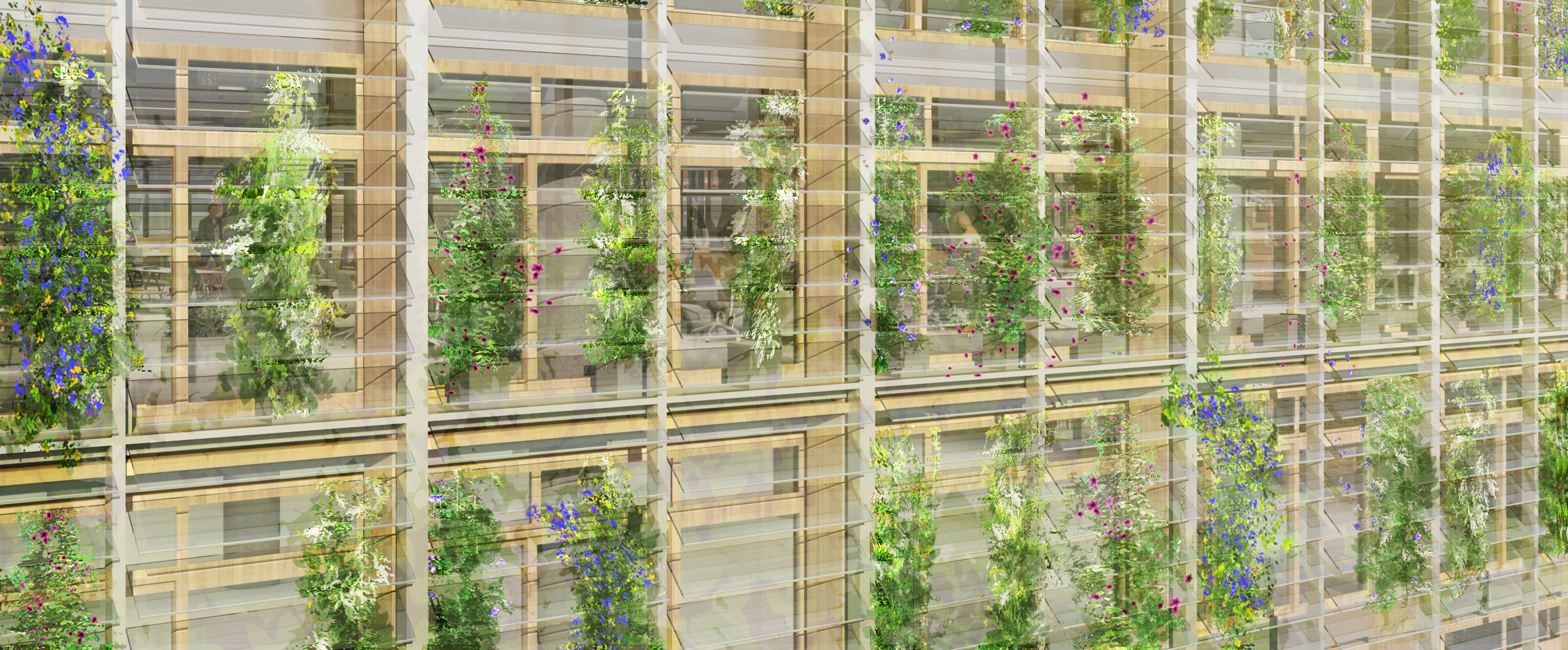
The innovative double skin façade has been developed to reduce energy in line with the project’s low-carbon design agenda. These ‘façade zones’ could bring plants and greenery into the building to add a natural counterpoint to the urban setting.
The façade design could provide shading to the south, east and west elevations – reducing solar gain and the energy required to cool the office spaces on the first, second and third floors and fifth to ninth floors. The seasonal environmental design strategy allows for passive ventilation through the operated opening and closing of windows and external glazed elements.
A single-skin façade design has been chosen for the laboratories on floors 1- 3 to help provide the enclosed conditions and environment needed. These would be fully mechanically ventilated, with the single skin allowing a clear sight into the laboratories and sight of the scientific activity from outside.
Transport and Accessibility
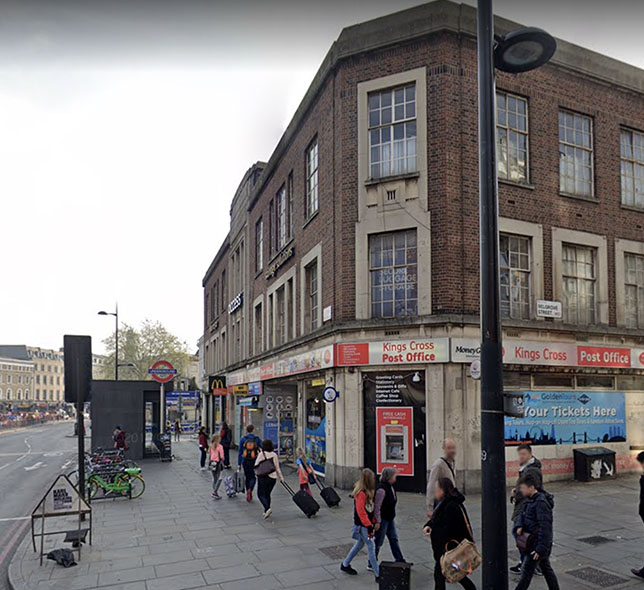

Image of existing tube entrance on Euston Road in front of Belgrove House
Illustrative view of new tube entrance on Euston Road
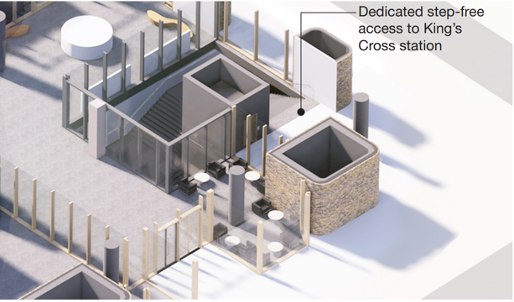
Diagram showing proposed step-free access to King’s Cross station within Belgrove House
The existing tube pavement entry boxes located outside Belgrove House and the Megaro Hotel significantly reduce pavement width and have a negative impact on the streetscape. There is currently no step-free access to the underground and rail network on this side of Euston Road and the proposals include a brand new step-free underground entrance within the footprint of the building.
By removing both of the current pavement boxes and providing a new, dedicated step-free entrance within the building on the corner of Euston Road and Belgrove Street, this could dramatically improve the public realm on all sides of the building and the pavement width and provide a more elegant connection to and from King’s Cross square.

Plan showing the four proposed new entrances into Belgrove House alongside the new proposed Tube entrance and loading bay entrance
Servicing
All servicing and deliveries for the Belgrove House offices/lab space will take place via the ground floor loading bay, with any vehicles entering the site from Crestfield Street and exiting onto Crestfield Street. The retail element of the development will be serviced from Crestfield Street in the same way as the existing McDonalds unit.
Cycling provision
We are proposing over 350 cycling parking spaces as part of our proposals for Belgrove House. These will be accessed via its own entrance located on Belgrove Street. We are also not proposing any car parking spaces as the area benefits from excellent transport connections.
As part of the scheme’s public realm improvements, there will be two-way cycle lane located on St Chad’s Street. There will also be relocated Santander bicycles along Belgrove Street.
Public access
The publicly accessible new café on the ground floor, and auditorium space on the lower-ground level will be accessed via a new entrance on Argyle Square.
Public Realm and Ground Floor
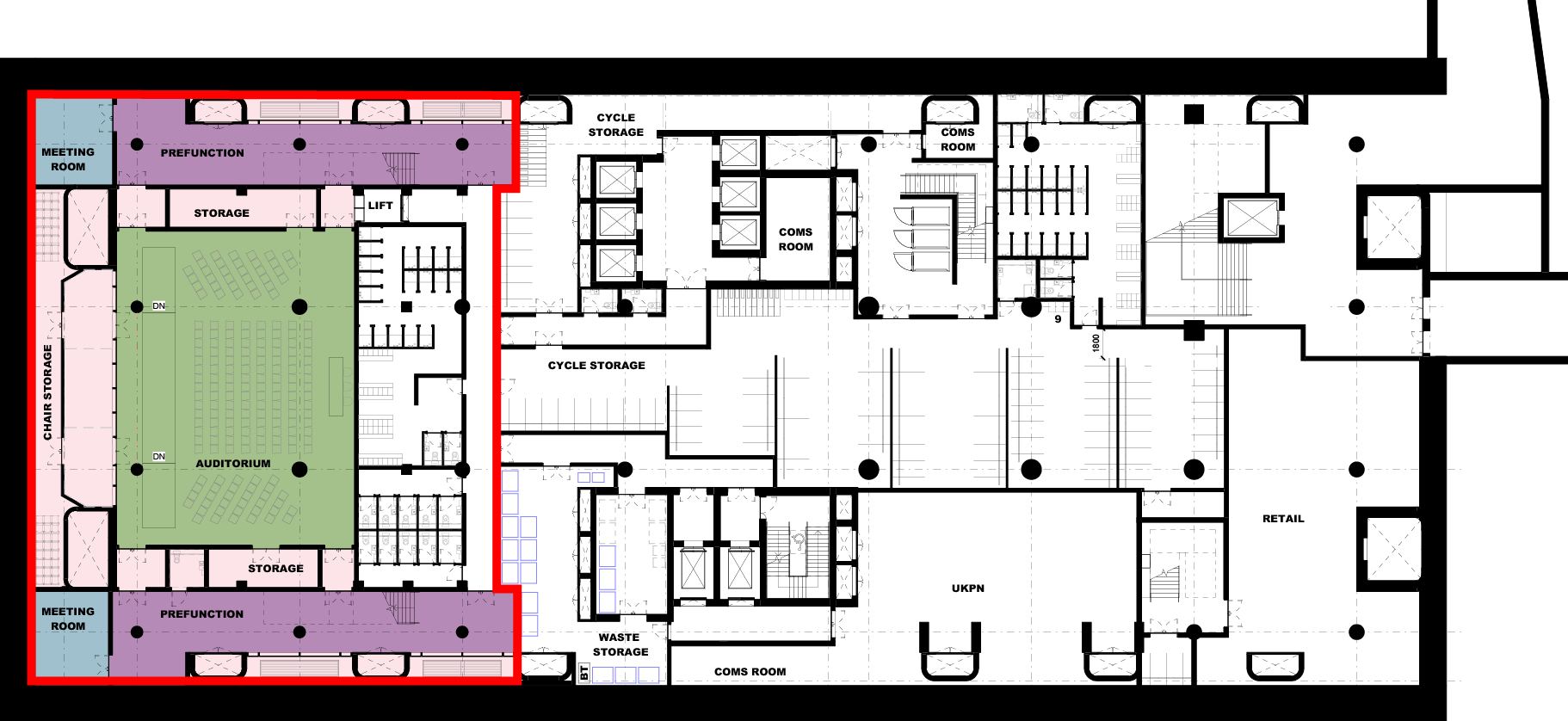
Lower ground floor plan showing publicly-accessible auditorium and meeting rooms with the new London Underground link
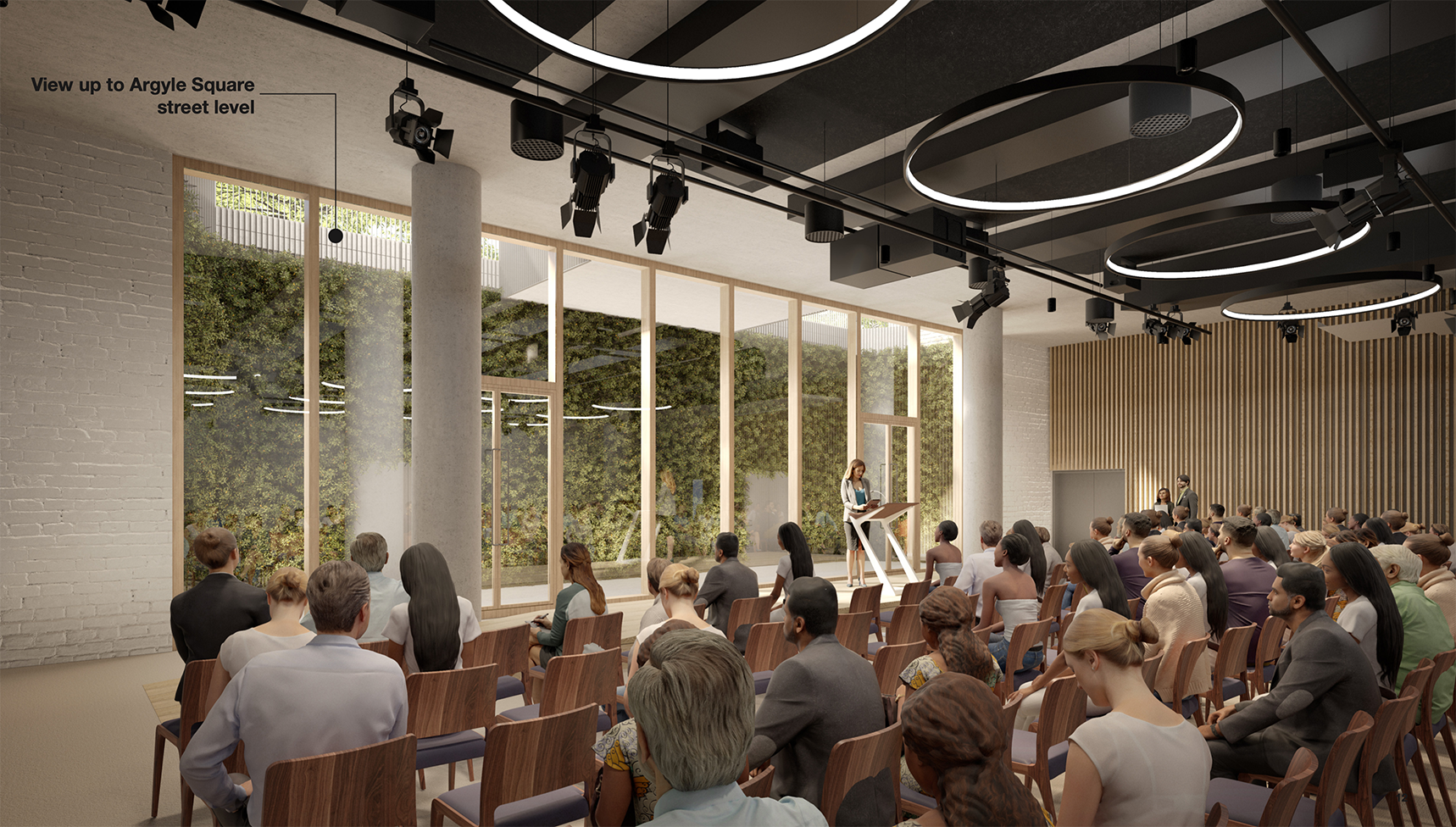
Illustrative image of the publicly accessible auditorium proposed on the floor ground floor
As part of the proposals, the ground floor of Belgrove House would be publicly accessible with the aim of enabling and encouraging local people to engage with the scientific activity within. A new café as well as event, meeting, exhibition and education spaces will all be accessible to the public. An auditorium located at lower ground level would also be available for public use.
We have a vision to transform the public realm in four zones around the site. There is potential for seating areas and other planting, such as rain gardens, raised planters, smaller trees, and woodland underplanting.
We are currently working closely with the London Borough of Camden and TFL to explore and develop these ideas further.

1. Euston Road
By removing both of the current pavement boxes and providing a new, dedicated step-free entrance within the building on the corner of Euston Road and Belgrove Street, this will dramatically improve the public realm on all sides of the building and the pavement width. This will also deliver a more aesthetically appealing connection to and from King’s Cross square.
3. Belgrove Street
Street with Santander bike stands and contraflow cycling
2. Crestfield Street
A green street with cycle parking leading to Argyle Square
4. St Chad’s Street
On the St Chad’s Street side of Belgrove House, there is a real opportunity to inject some green into this urban scene with seating areas for the public to stop and enjoy the planting. We are also proposing to close St Chad’s Street to vehicles and create a new pedestrianised landscaped public space. Here we are exploring incorporating a cycle lane whilst maximising the pedestrian route. Mini rain gardens and planters could potentially be taken over by local groups as community gardens and help safely separate the cycle lane and pedestrians. Example images of educational playspaces implemented in St Chad’s Street.
Example images of educational playspaces implemented in St Chad’s Street
The Knowledge Centre – A dedicated space for collaboration and innovation
The Knowledge Quarter has one of the highest densities of Knowledge based, cultural and scientific businesses of anywhere in the world and the Belgrove House site is at its centre. This proposal seeks to explore what this provision would look like, how it could work and how it could benefit those living or working in the area and those visiting.
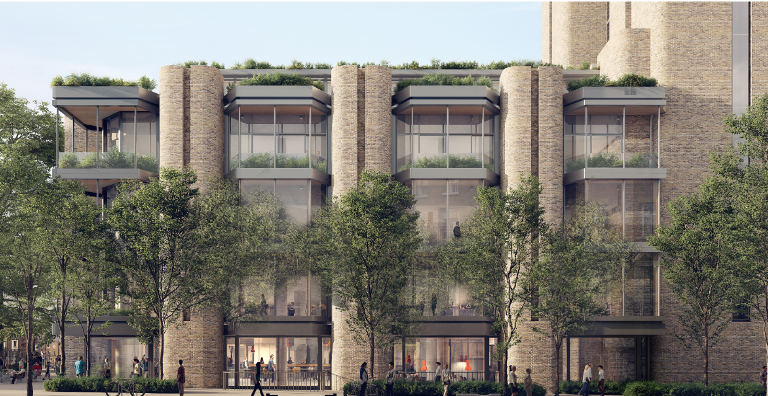
Through our discussions with the London Borough of Camden and other local organisations such as the King’s Cross Brunswick Neighbourhood Association (KCBNA), Camden STEAM, The Knowledge Quarter and The Young Camden Foundation (YCF) the importance of engaging young people in the area and the borough has become apparent. We very much see the Knowledge Centre as place where young people can learn about the KQ, the tenant of the building and other businesses in the area.
Precedents
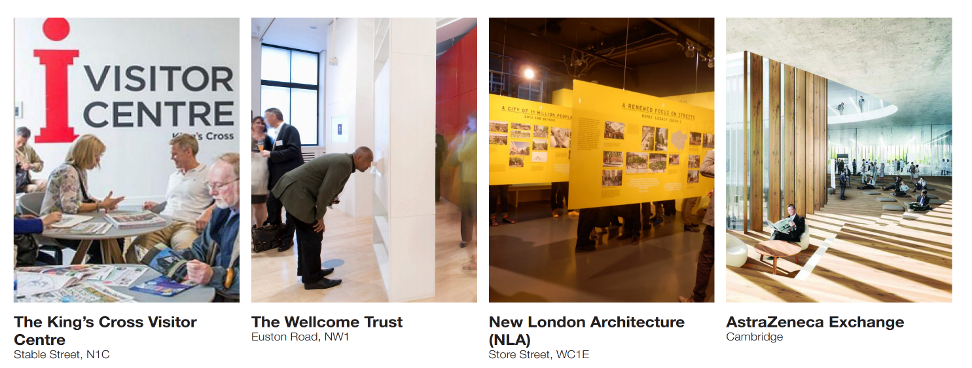
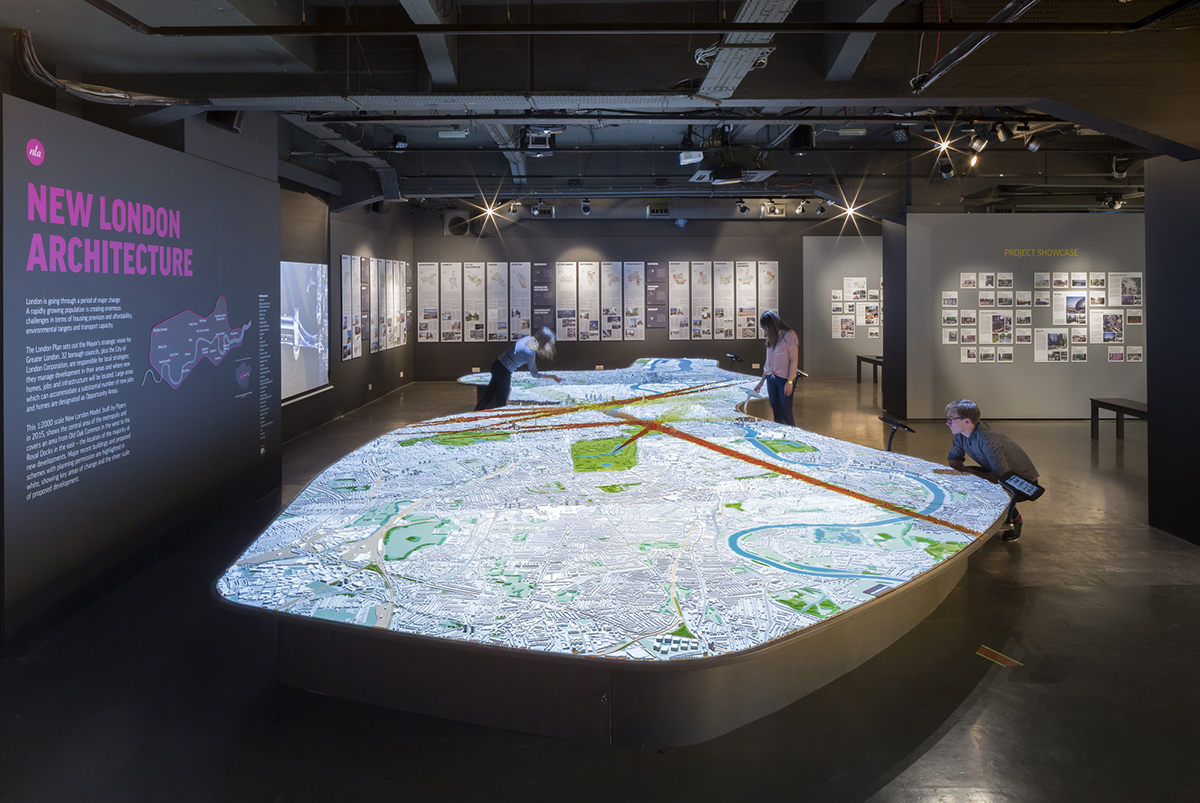
The Knowledge Centre could contain the following facilities:
Knowledge Centre
- An information point for all visitors
- Has details about the KQ and its organisations
- An interactive model of the KQ & VR sets for interactive learning
Flexible Events Space
- 200-300 person flexible events space at lower ground floor
- Workshops with a focus on careers in technology & science
Pre-function & Collaboration Zones
- Seating and break-out areas for informal meetings
- Used as pre-function spaces during events
Public Realm
- Interactive playspace and mini rain gardens on St Chad Street to allow learning about sustainability
Exhibition, Cafe & Events Space
- Located in the ground floor reception area
- Highly visible from the surrounding streets and Londond Underground entrance
- Hosts permanent and temporary exhibits about the work undertaken in the KQ
- Offers tours for local schools or groups to offer insight on the life-sciences
Meeting Spaces
- Meeting room suite
- Ground floor: two 6-person & one 10-person meeting rooms
- Located at lower ground level: two 12-15 person meeting rooms
Support Facilities
- Technical rooms and storage
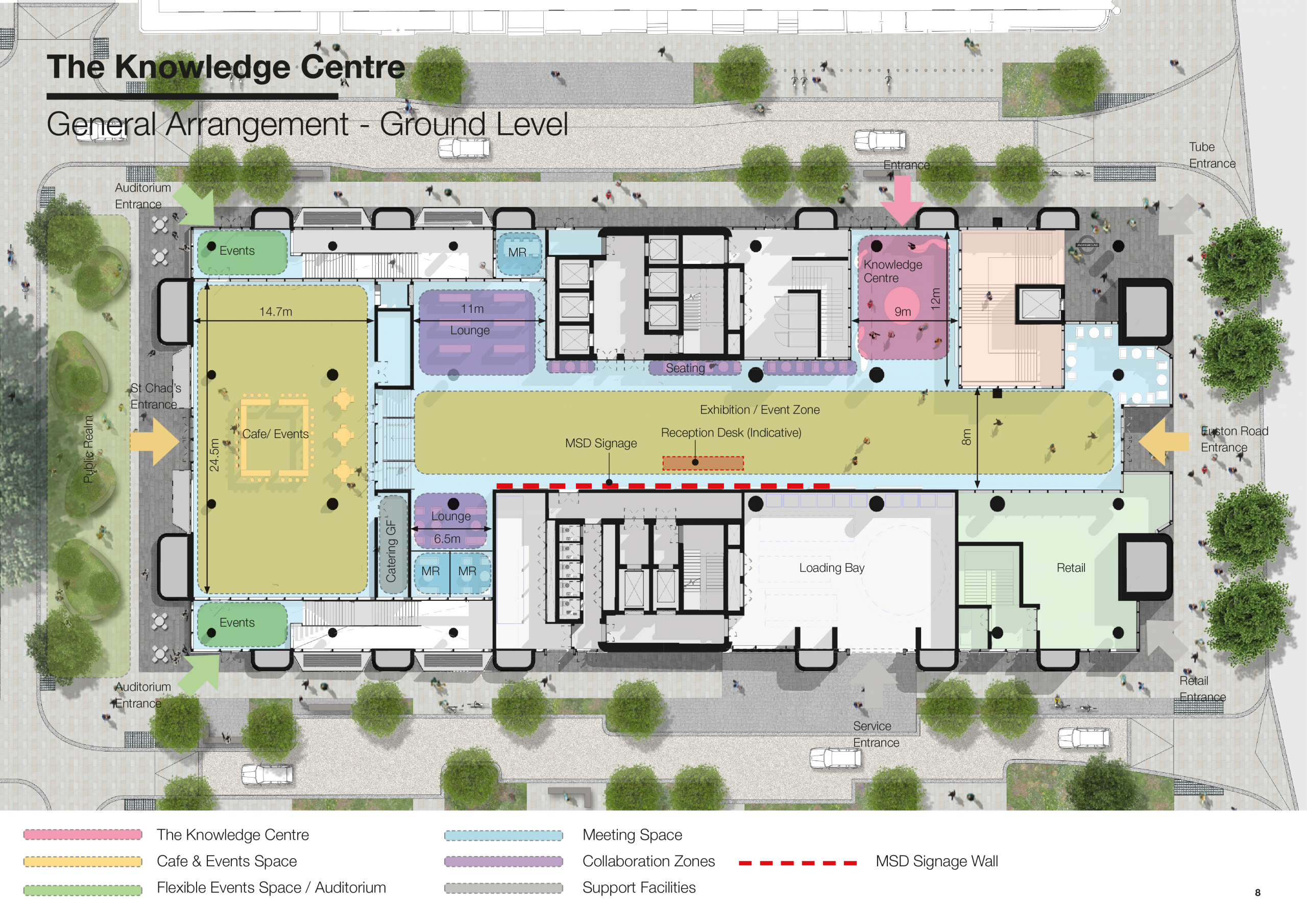
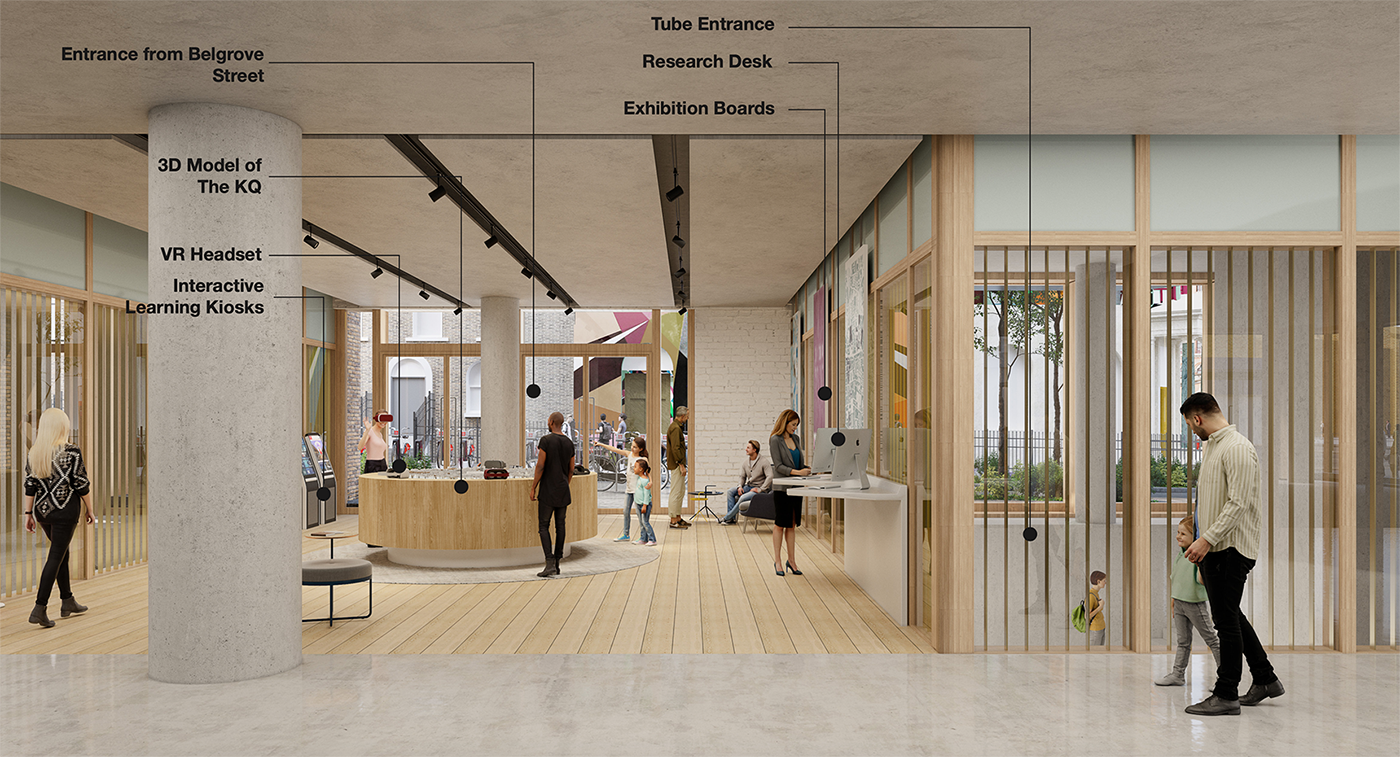
Illustrative images of what the Knowledge Centre Information Point could look like
Benefits
This project in King’s Cross could provide a range of environmental, social and economic benefits for the local community. These include:
Environmental
- Whole life carbon approach
- A sustainable building designed to use renewable energy
- Significantly improved public realm with new planting
- Removal of tube entrance boxes
- New step – free King’s Cross entrance
- Biophilic design and use of natural and recycled materials where possible, potentially including materials from the existing building
- Sustainable transport options
- Ambitious environmental credentials for the building targeting BREEAM, WELL and LEED benchmarking
- Urban greening
- Closure of St Chad’s Street to vehicles and creation of a new pedestrianised landscaped public space
Social
- Affordable housing at Acorn House, south of the Euston Road
- Affordable workspace at Acorn House
- Potential retention and relocation of the Post Office
- Publicly accessible ground floor including event, meeting, exhibition and education spaces as well as a café at Belgrove House
- Public access to lower ground auditorium space at Belgrove House
- Publicly accessible Knowledge Centre, providing a valuable access point for members of the local community and visitors to the King’s Cross area to learn more about the initiative which aims to promote collaboration.
- Dedicated children’s playspace, community room and landscaped terrace for residents at Acorn House
Economic
- Bringing over 1,000 jobs across office, retail, event space and life-sciences, along with over 1,000 jobs related to the construction
- Commitment to securing Camden STEAM Commission pledges amongst end users and occupiers
- Opportunities for employment and training initiatives for young people
- Provision of construction training opportunities for local residents
- Provision of construction apprenticeships
- Opportunity for apprenticeships and work placements in the life sciences industry
- Community wealth building – maximise opportunities for local businesses to supply goods and services at construction and end user phases through a local procurement plan
- Ensure supply chain contractors and tenants sign up to the Good Work Camden practices, join the Inclusive Business Network and support the Employment and Skills Network
